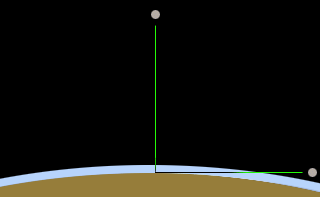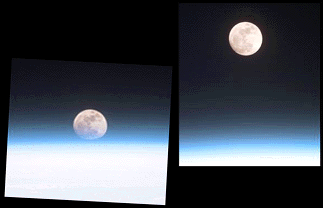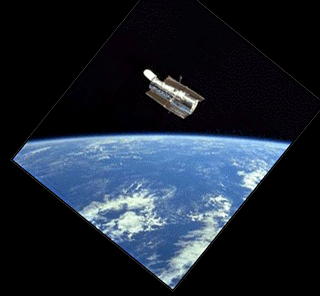How the Atmosphere Affects Light |
|
|
Earth is covered by a thin layer of atmosphere.
The light from astronomical objects must pass through the atmosphere to reach observatories on the Earth's surface. |

South Eastern Australia from Space Shuttle Mission STS56. |
|
Astronomers prefer to look at objects directly overhead where the column of air between the observer
and the object is shortest - approximately 100 km.
When an object is near the horizon, the path through the atmosphere lengthens to many hundreds of kilometers and filtering, refraction and distortion becomes severe. |

A slice through the atmosphere, showing light paths. |
|
The affect of the atmosphere is visible in these photographs taken from the Space Shuttle.
The atmosphere bends (refracts) light. In the left hand image, the underside of the Moon appears flattened. Light from the base has passed through a greater thickness of atmosphere and suffers more refraction than light from the upper half. In the image on the right, the Moon has risen above the atmosphere and is distortion free. The atmosphere filters (absorbs) light. Blue light is affected the most. As light from the Moon in the left hand image passed through the atmosphere, some blue light was filtered out. The Moon appears reddish as a result. |

Views of the Moon rising over the limb of the Earth from Space Shuttle Mission STS103. |
| The Hubble Space Telescope provides our best views of the universe in visible light. It does not suffer from the distorting and obscuring affects of the atmosphere because it is placed in low-earth orbit above it. |

The Hubble Space Telescope from Space Shuttle Mission STS103. |